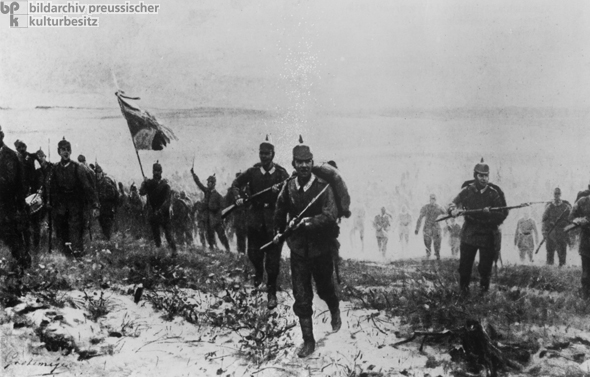













INTRODUCTION | DOCUMENTS | IMAGES | MAPS | EDITOR
|
After numerous losses in the Battle of the Marne and the collapse of the Schlieffen Plan in September 1914, the "race to the sea“ began. Over the course of this race, the Fourth German Army advanced in the direction of Ypres, where an unsuccessful assault took place at the beginning of November 1914. On November 10, 1914, thousands of soldiers lost their lives in the Battle of Langemarck (actually fought in Bixschote). Nonetheless, the Supreme Army Command still saw fit to use the battle for propaganda purposes, announcing that the young soldiers had gone into battle with the German anthem on their lips and had captured the front line of the enemy positions. The so-called Langemarck Myth was thereby created and became fixed in cultural memory. Langemarck became a rallying point for middle-class, nationalist youth and a catch phrase for the political right. Until approximately the middle of the twentieth century, it was the inspiration for commemorative celebrations, youth organizations, schools, and National Socialist study programs.
Painting by Fritz Grotemeyer (1864-1947)
© Bildarchiv Preußischer Kulturbesitz |
 print version
print version return to image list
return to image list last image in previous chapter
last image in previous chapter
